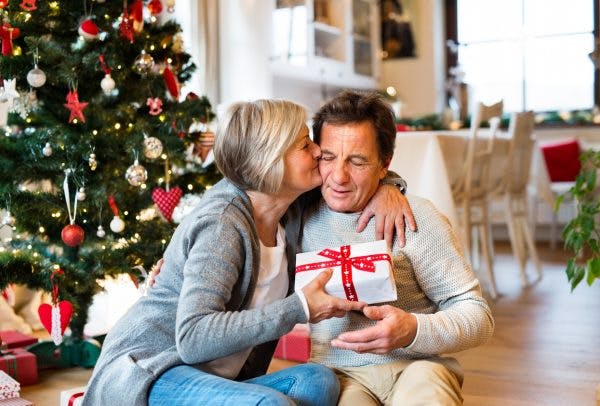Learning what to expect after brain injury (TBI) can help you and your loved ones prepare for the road ahead. Every brain injury is different and every survivor may experience a variety of secondary effects, depending on the location and severity of the TBI.
Therefore, as a survivor, knowing the possible outcomes can help you work through any effects you may experience and embark on a safe, effective recovery. Additionally, if you’re a caregiver, understanding what happens during the acute hospital stay following TBI can help you take the necessary precautions and ensure a safe transition home for your loved one.
This article will discuss what to expect after brain injury as a survivor and as a caregiver, outlining the aftermath and the rehabilitation process.
Brain Injury Recovery Starts in the Hospital
A traumatic brain injury requires immediate medical care in order to stabilize the survivor and minimize the progression of secondary damage. The emergency team at the hospital will run diagnostic tests and provide swift treatments for TBI if necessary.
Initial treatment depends on the location and severity of the brain injury. For example, in moderate to severe cases, surgery may be required to relieve pressure on the brain. In other instances, steroids may be used to reduce swelling in the brain, although there is conflicting evidence on the effectiveness of this. For milder TBIs, also called concussions, medication may be prescribed to help alleviate some of the symptoms such as headaches or nausea.
After stabilization, survivors begin progressing through the brain injury recovery stages. For example, some survivors remain in a coma, a deep state of unconsciousness. After regaining awareness, or if the individual did not fall into a coma, survivors may transition into a minimally conscious state.
When individuals emerge from this state, they may experience post-traumatic amnesia, a state of confusion. In this state, survivors may exhibit unusual behaviors such as agitation or frustration. Fortunately, post-traumatic amnesia is a normal part of the recovery process that is almost always temporary.
Survivors that reach this stage are very likely to make a functional recovery. Generally, the less severe the brain injury, the better the recovery outlook, however, many survivors with severe brain injuries have made astounding recoveries.
Still, the length of acute hospital stay varies, but once the survivor is stable and no further complications have been detected, some survivors are discharged to a rehabilitation facility for intensive therapy before going home, while others return directly home.
Transition from the Hospital to Home After Brain Injury

Returning home after sustaining a traumatic brain injury can require many changes and adjustments. To ensure a safe transition, it helps to create home modifications.
For instance, if you struggle with hand function, adding door knob extenders can help you enter and leave the house. Additionally, clearing walkways of cords and clutter and adding rug grippers can help lessen the risk of falling or slipping. Investing in adaptive equipment can also help make tasks like bathing and eating easier.
Additionally, before you leave the hospital, your rehabilitation team should establish a program for you to continue your recovery from home. Many survivors also continue to attend regular outpatient therapy sessions after discharge from the hospital, which provides valuable time with your therapist.
Eventually, however, insurance may no longer cover the cost of valuable therapy treatments or survivors may prefer to get a higher level of intensity of rehabilitation. Fortunately, there are other ways to stay engaged in therapy from the comfort of your own home.
Gamified neurorehabilitation devices, like FitMi, provide access to full-body exercises tailored to your level of ability. MusicGlove is another neurorehabilitation device that helps improve fine motor skills through a fun, musical game to help you stay motivated and engaged in between therapy sessions.
In the hospital survivors have easier access to their medical team and therefore are able to communicate any new or recurrent symptoms they experience. However, it’s equally important to consult with your doctor once you’re home and ask questions if you are having concerns about what to expect after brain injury.
What to Expect After Brain Injury: The Recovery Process

Because every traumatic event is different, it can be challenging to predict exactly what to expect after brain injury. The effects of TBI that survivors may experience depend on the severity and the areas of the brain affected. Damage to various locations of the brain may cause a range of physical, cognitive, emotional, and behavioral effects.
Common effects of traumatic brain injury include:
- Dizziness and balance problems
- Severe headaches
- Spasticity
- Muscle weakness
- Seizures
- Double vision
- Left neglect
- Light sensitivity
- Loss of depth perception
- Attention problems
- Difficulties with decision making skills
- Memory problems
- Lack of insight
- Anxiety
- Low motivation
- Depression
- Severe mood swings (emotional lability)
- Lack of emotions (flat affect)
- Executive Dysfunction
- Pure Alexia (difficulty reading)
- Fatigue
Understanding the various secondary effects that may occur can help you anticipate what to expect after brain injury. Many may still wonder, can survivors make a full TBI recovery? The answer lies in the brain’s ability to heal and rewire itself through neuroplasticity.
After a brain injury, many of the brain’s neural pathways used to communicate with the rest of the body may become damaged. However, with neuroplasticity, existing pathways are strengthened and new ones are created. This helps survivors restore any impaired or lost functions and promote recovery.
The best way to stimulate the brain and activate neuroplasticity is through high repetition exercises, or massed practice. During the first 3-6 months following a TBI the brain enters a heightened state of neuroplasticity. Survivors may see huge strides in this time frame but may feel progress has slowed after this stage. This is a normal part of recovery, referred to as a plateau.
To stay motivated on the road to recovery, it’s important to activate neuroplasticity as much as possible by participating in consistent rehabilitation therapy. This can include a combination of physical, occupational, and speech therapy; but is enhanced by any additional work the survivor can put in on their own time.
For example, if you want to improve memory, you must consistently practice activities that test your memory. Likewise, if you want to improve your mobility, you must repetitively practice using the affected body parts.
The aftermath of a brain injury may look different for everyone, but undoubtedly, activating neuroplasticity and engaging in rehabilitation therapy can be extremely beneficial for all survivors.
How Caregivers Can Help Their Loved Ones After TBI

As a caregiver, you play an essential role in a survivor’s recovery process. While it may feel overwhelming not knowing what to expect after brain injury or how to properly care for your loved one, learning some tips on caring for survivors can help ease your load.
Give your loved one the space and freedom to be independent, encourage them to participate in rehabilitation therapy, and last but not least, allow yourself to take breaks to rest and recharge. It may be beneficial to join a caregiver support group to help you connect with others going through similar experiences. While it can be challenging and difficult to adjust to the changes of a brain injury, it can also be rewarding.
Understanding What to Expect After Brain Injury
Every traumatic brain injury is different, therefore the outcome for every survivor will vary. However, knowing what to expect after brain injury can help survivors and loved ones prepare for any possible outcome and seek proper treatment.
While there are a wide range of secondary effects and/or complications that can occur, there are also many effective recovery methods survivors can engage in such as rehabilitation therapy. High repetition exercises help stimulate the brain and activate neuroplasticity. This helps survivors restore function, maximize independence, and promote recovery.
We hope this article has helped you understand what to expect after brain injury and restored your hope in the recovery process.










